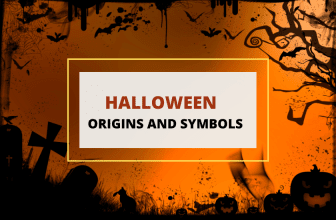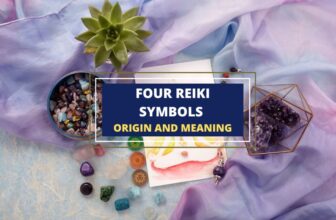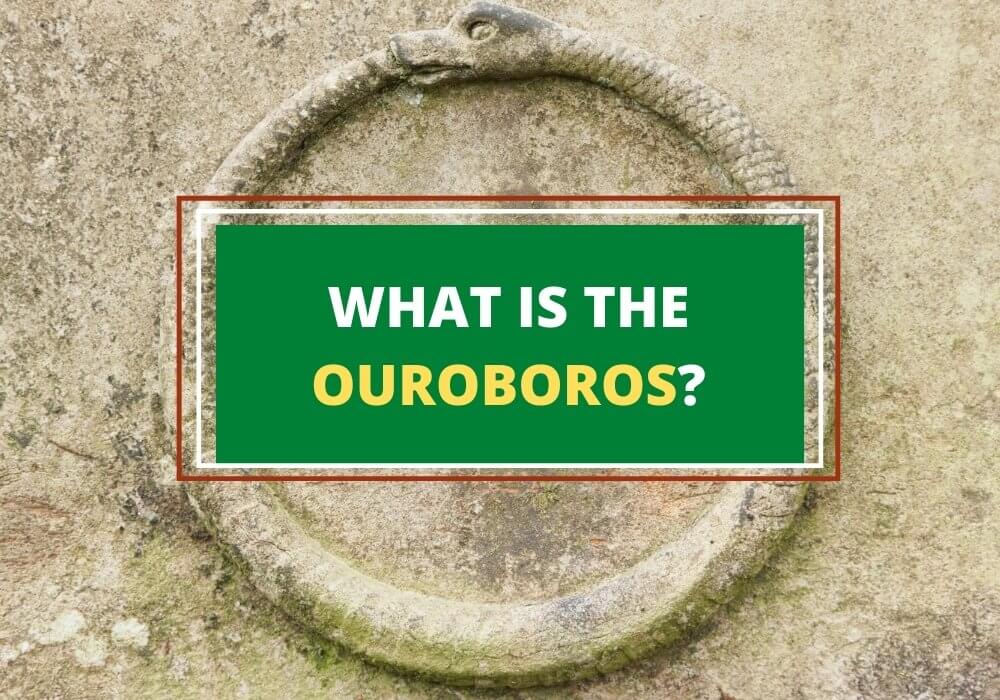
Table of Contents
The Ouroboros is a highly recognizable symbol, featuring either a snake or dragon consuming its own tail, thereby forming a circle. Yet where did this strange symbol come from and what does it represent?
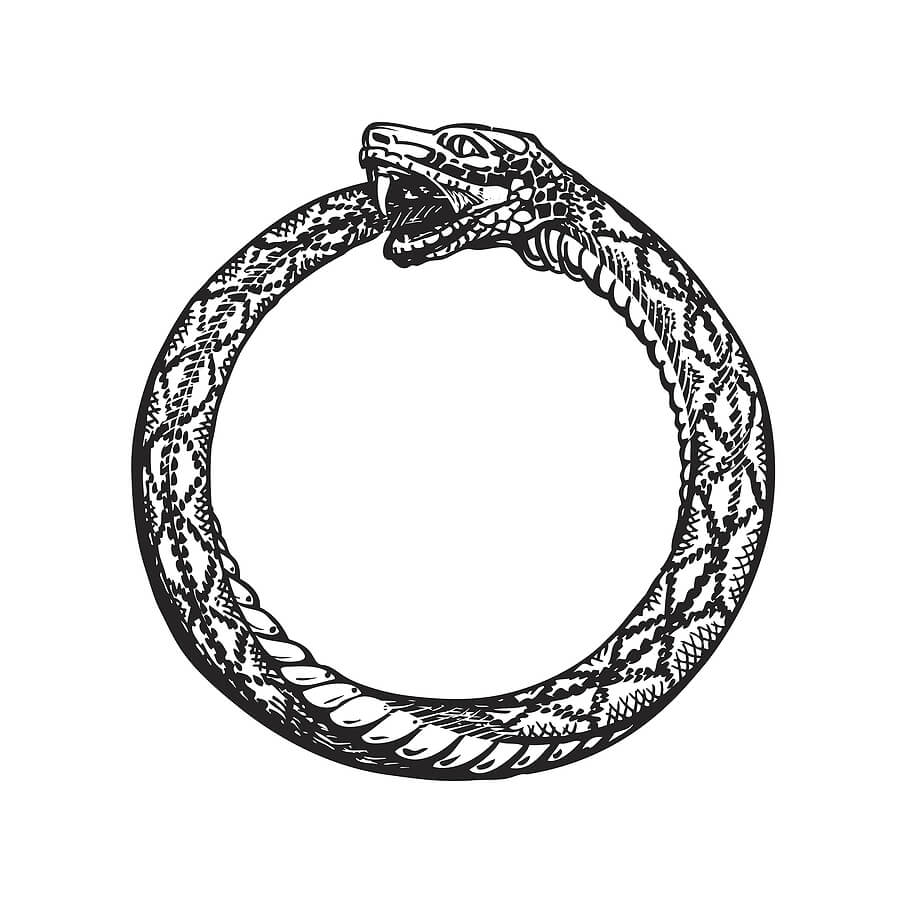
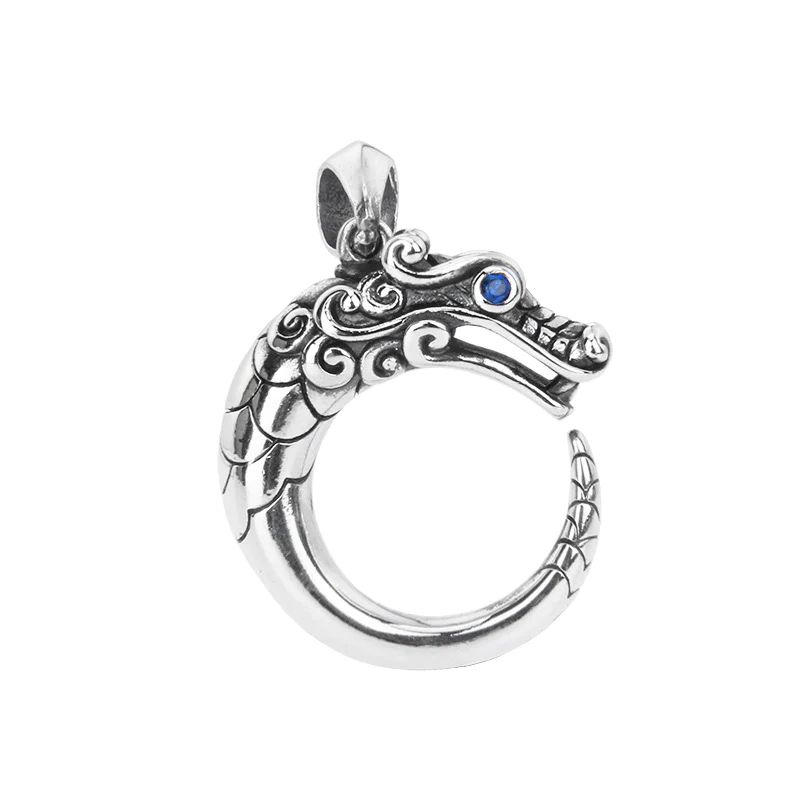
Ouroboros – Egyptian Origins
Variations of the Ouroboros can be seen in different cultures and contexts, but the symbol is associated with Egypt. The oldest depiction of the Ouroboros was found in Tutankhamun’s tomb, portrayed in The Enigmatic Book of the Netherworld, a funerary text discovered within the tomb. The image of Ouroboros is depicted twice in the text: once at the head and again at the feet of a figure that is believed to be Ra-Osiris. The Egyptians believed the image of Ouroboros covering Ra-Osiris was a symbol for the beginning and end of time.
The circular image of the Ouroboros within Egyptian iconography is a reflection of the belief in the chaos that envelopes the world and the order and renewing that comes out of the chaos.
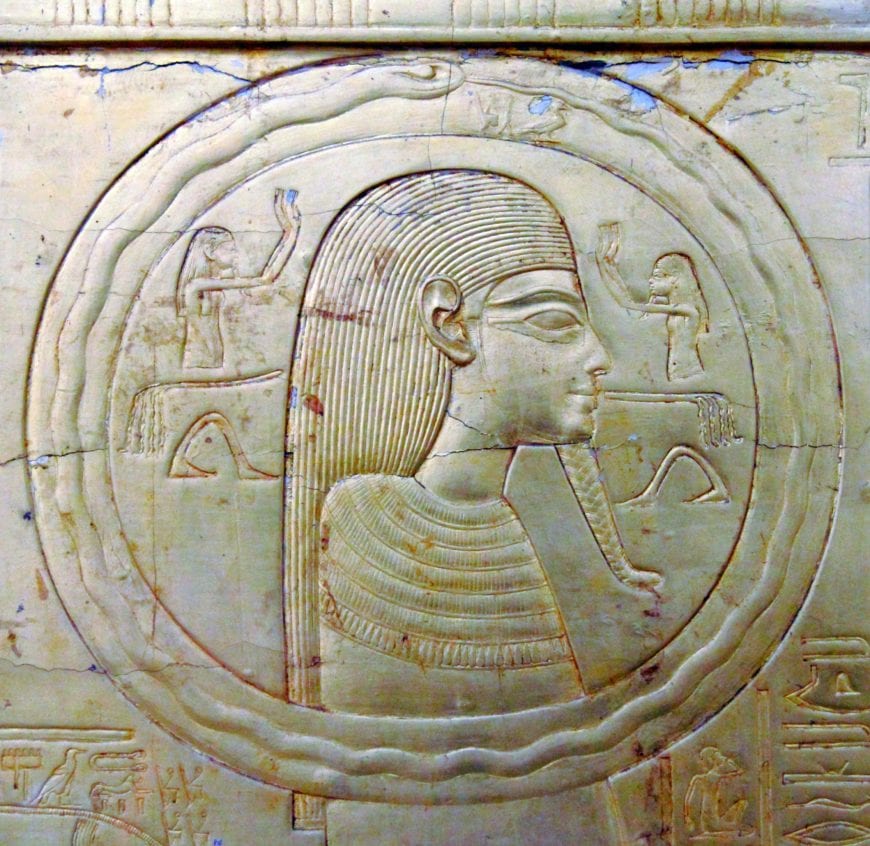
Ouroboros – Depictions in Other Cultures and Contexts
The Ouroboros eventually slithered out (pun intended) from Egyptian culture and into the world of the Greeks where it was given new interpretations.
1- A Gnostic View of Ouroboros
Within Gnosticism, an ancient religious sect that challenged the belief that a benevolent God created the world, the Ouroboros took on a new meaning where it was seen to represent the infinite cycle of death and rebirth. It was also taken to be a symbol of fertility, as the tail of the Ouroboros was interpreted as a phallus and the mouth the womb that receives the seed.
Yet another Gnostic interpretation of Ouroboros sees it as symbolizing the demarcation points between Earth and Heaven, while other Gnostics saw it as a representation of the devil who made this world and bars anyone from escaping it.
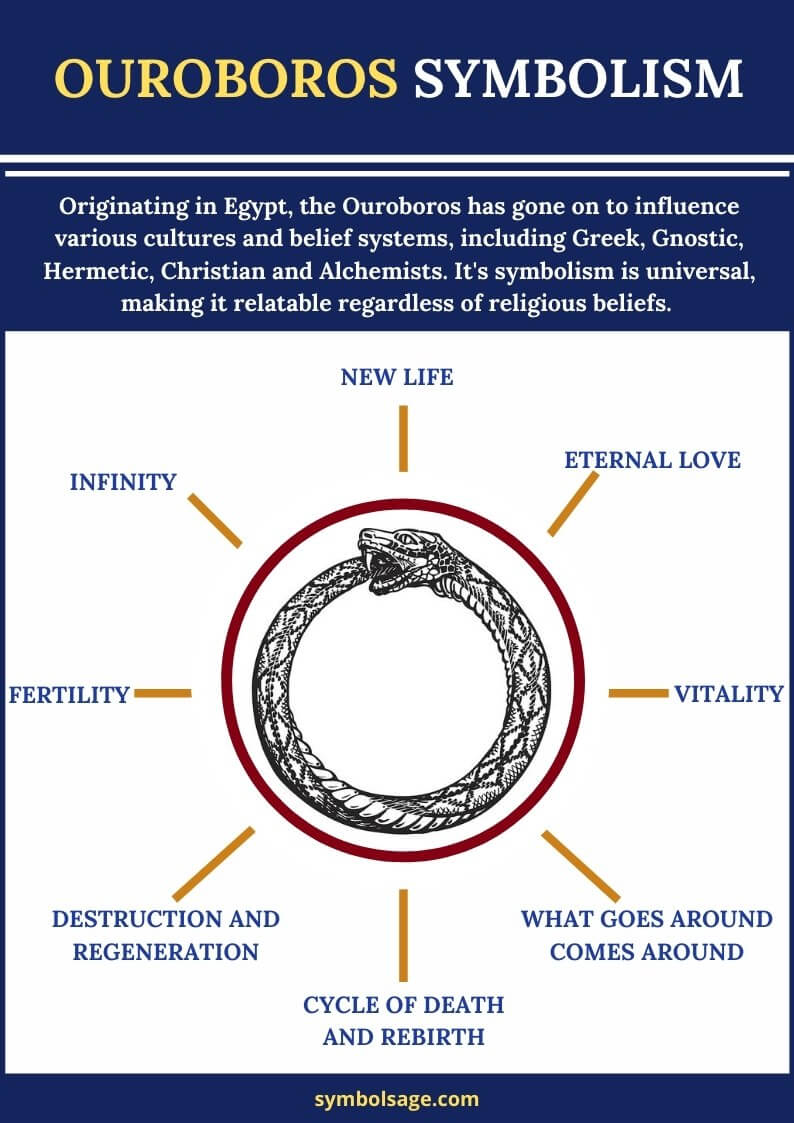
Gnostics also saw the extreme ends of the Ouroboros as the symbol of the two distinct parts of humans: the spiritual and the earthly. And, as the Ouroboros enclosed upon itself, it was taken as an emblem of the union between these two diverse aspects of ourselves.
2- Hermeticism Reinterprets the Ouroboros
In the Greek school of thought, Hermeticism, the Ouroboros is taken as a reflection of the cyclic nature of death and rebirth, of destruction and creation, of transformation as illustrated in the article Hermeticism and Cosmic Cycles which states:
“As a symbolic illustration of this passage point, one can use the example of the Ouroboros, the snake swallowing its own tail and whose mouth is simultaneously a place of destruction and a source of generation. This is because the act of eating/digesting is both destructive and generative depending on the perspective one takes. In this case, the snake eats its own tail (destruction) and regrows from it (generation) in an endless cycle”
3- Alchemy and Ouroboros
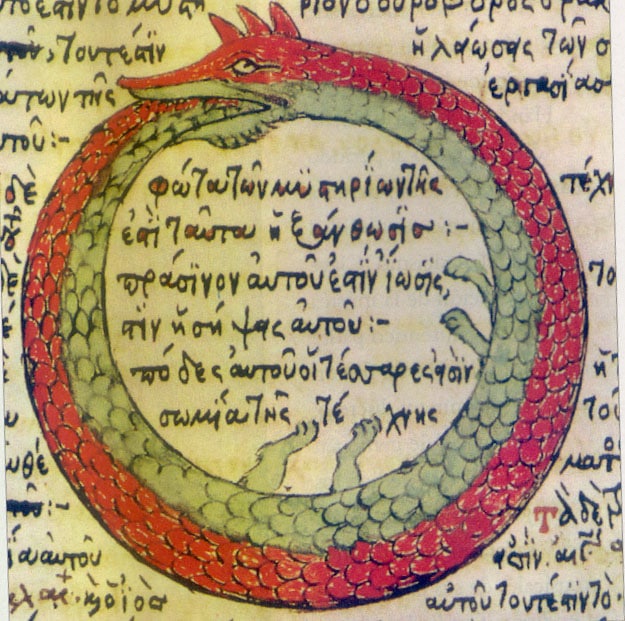
The Ouroboros was adopted by the Alchemists, whose overall aim was to change base metal into precious gold. Yet their obsession extended beyond the material realm and into the spiritual. Alchemists possess a belief in the transmutation of the soul.
What does that have to do with Ouroboros?
Like a circle that is seen consuming itself, the Ouroboros was a great symbol for the Alchemists belief in the endless cycle of death and rebirth. A circle that the alchemists sought to be freed from.
4- The Ouroboros in Indian thought
Moving on from Greece, over to India we see how, within Hinduism, there is mention made of a snake that could be seen to be interpreted as the Ouroboros. The article The Development of the Vedic Canon and its Schools: The Social and Political Milieu mentions Vedic rituals within certain sects of Hinduism that are seen to be analogous to a snake consuming its own tail. In the article we read:
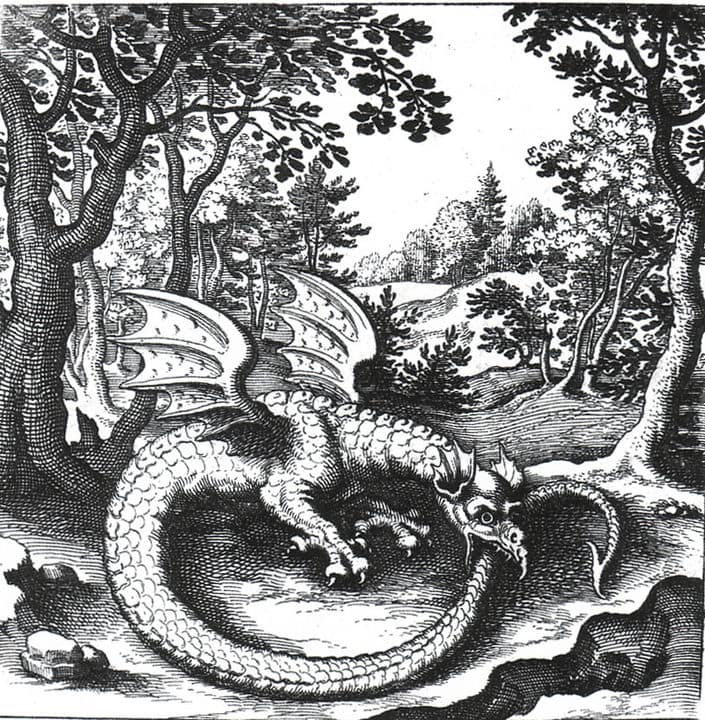
“They point out the closed form of the ritual, which is seen as a closed circle, a snake biting its own tail…”
Also, the concept of a snake closing upon its own tail is seen in the Yoga-Kundalini Upanishad to symbolize Kundalini energy, which is sitting, like a coiled serpent, at the base of the spine. The Kundalini energy lies dormant at the base of the spine, coiled up and waiting to be awaken. When the energy is stirred, it uncoils itself and stretches along the length of one’s spine.
5- A Christian View of Ouroboros
Within Christianity, serpents are given a bad reputation. The snake that tempted Eve is taken to be Satan and so serpents are synonymous with the devil. Some view the Ouroboros as a symbol of the false lies spread by the devil as well as a representation of the coming Antichrist.
However, some Christians give the Ouroboros a less ominous interpretation, preferring to see it as a symbol of new life. Just as a snake sheds its skin, so too do we discard our old selves and become renewed through the resurrection of Jesus.
Ouroboros in Modern Times
In more contemporary times the Ouroboros has again undergone reinterpretation with it being seen as a symbol of infinity. A concept that has been illustrated in the 20th century by artists through the imagery of never-ended staircases, Mobius strips, and the Droste Effect, in painting or photos in which the image recursively reproduces itself.
Back in Victorian times, Ouroboros jewelry was worn during times of mourning as the circular style of the symbol could be seen to represent the eternal love between those who had passed away and the ones left behind.
In more contemporary times, it’s sometimes worn as bracelets, rings, and pendants. It’s also becoming a popular option as a tattoo as the Ouroboros serves as a reminder of the cyclic nature of life and that everything is in a constant flow of creation, destruction and recreation. It’s a reminder that all things are connected and will come full circle. We may suffer, but joy is soon to come. We may fail, but success is on its way.
FAQs
The ouroboros originated in ancient Egypt then found its way to Greece. It’s been associated with a variety of philosophies and religions, including Gnosticism, hermeticism, alchemy, Christianity, and Hinduism, to name a few.
The ouroboros symbol doesn’t depict a deity. It’s simply a representation of a variety of concepts, including infinity, the cycle of death and rebirth, destruction and regeneration, and so on.
This image is symbolic as it represents cyclical concepts, such as life, death, and rebirth, eternal renewal, infinity, and the concept of karma – what goes around, comes around.
While serpents have negative associations in many cultures, the ouroboros symbol holds positive connotations. It’s not a bad symbol and is interpreted positively.
The ouroboros originated in ancient Egyptian iconography.
While it might seem like a nightmare-inducing scenario, sometimes snakes do eat their own tails. They sometimes do this as a way to cope with stressors, hunger, hypermetabolism, or thermoregulation.
https://www.youtube.com/watch?v=owNp6J0d45A
In Norse mythology, Jormungandr was the World Serpent that surrounded the world and grasped its own tail – much like an ouroboros. However, Jormungandr wasn’t eating its tail, it was simply holding on to it. As the myth goes, when it lets its tail go, then Ragnarok, the cataclysmic end of the world event, would unfold. It’s likely that the Norse were influenced by the Greek image of the ouroboros.
Summing up the Ouroboros
The Ouroboros was seen by the ancient Egyptians as a way of indicating infinity, which is the idea that was carried through to the Greeks. Yet the Greeks saw it as a reflection of the eternal cycle of death and rebirth which is what the alchemists sought to be free from. Since its appearance, the Ouroboros has gained a variety of interpretations, including modern interpretations signifying that the symbol represents the Antichrist, eternal love between two people and infinity.






